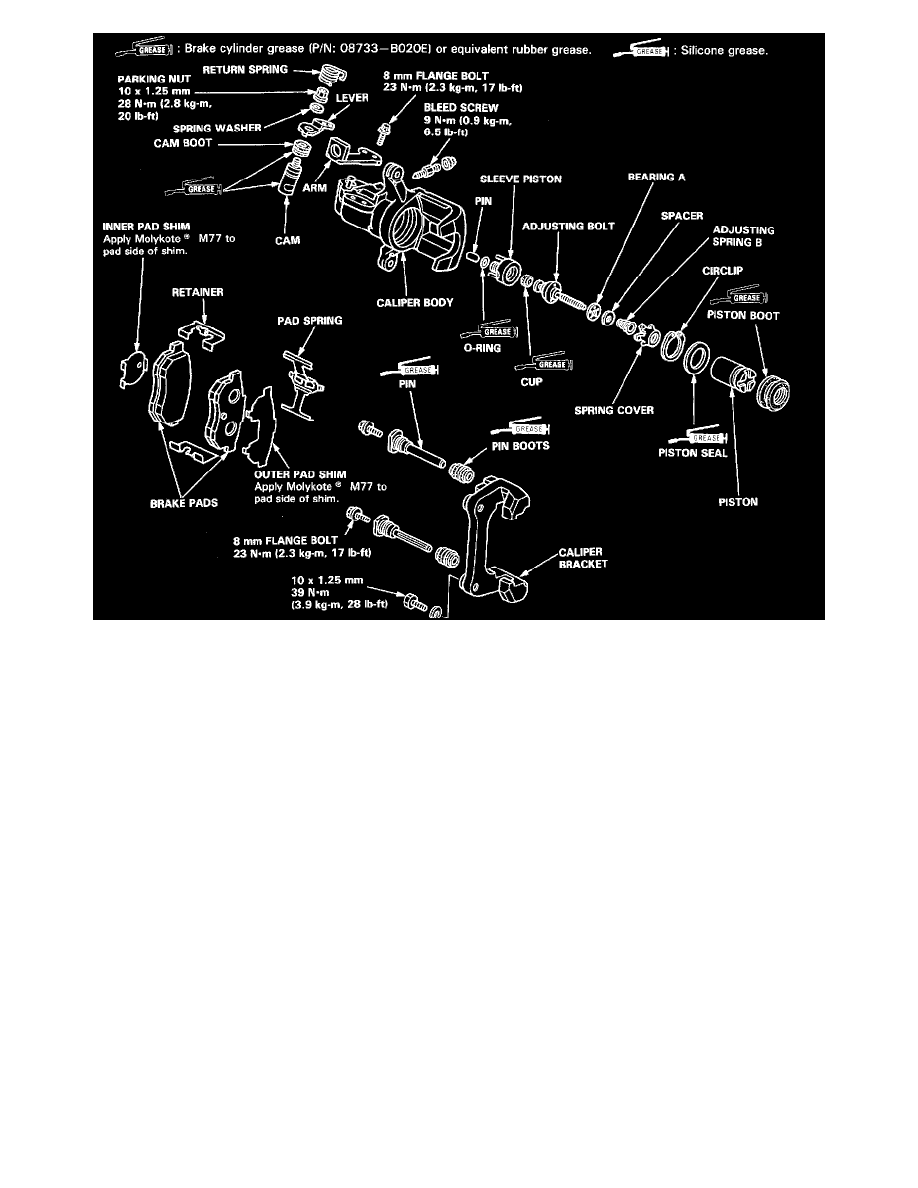Del Sol L4-1.5L SOHC (1993)

Reassembly
WARNING:
-
Never use an air hose or dry brush to clean brake assemblies.
-
Use an OSHA-approved vacuum cleaner to avoid breathing brake dust.
-
Contaminated brake discs or pads reduce stopping ability.
-
When reusing the pads, install them in their original positions to prevent loss of braking efficiency.
CAUTION:
-
Do not spill brake fluid on the car; it may damage the paint: if brake fluid does contact the paint, wash it off immediately with water.
-
To prevent spills, cover the hose joints with rags or shop towels.
-
Clean all parts in brake fluid and air dry; blow out all passage with compressed air.
-
Before reassembling, check that all parts are free of dust and other foreign particles.
-
Replace parts with new ones whenever specified to do so.
-
Make sure no dirt or other foreign matter is allowed to contaminate the brake fluid.
-
Do not mix different brands of brake fluid as they may not be compatible.
-
Do not reuse the drained fluid. Use only clean DOT 3 or 4 brake fluid.
NOTE:
-
Coat piston, piston seal, and caliper bore with clean brake fluid.
-
Replace all rubber parts with new ones whenever disassembled.
1. Pack all cavities of the needle bearing with recommended grease.
.
Coat the new cam boot with recommended grease and install it in the caliper body.
3. Apply recommended grease to the pin contacting area of the cam and install the cam and lever assembly into the caliper body.
